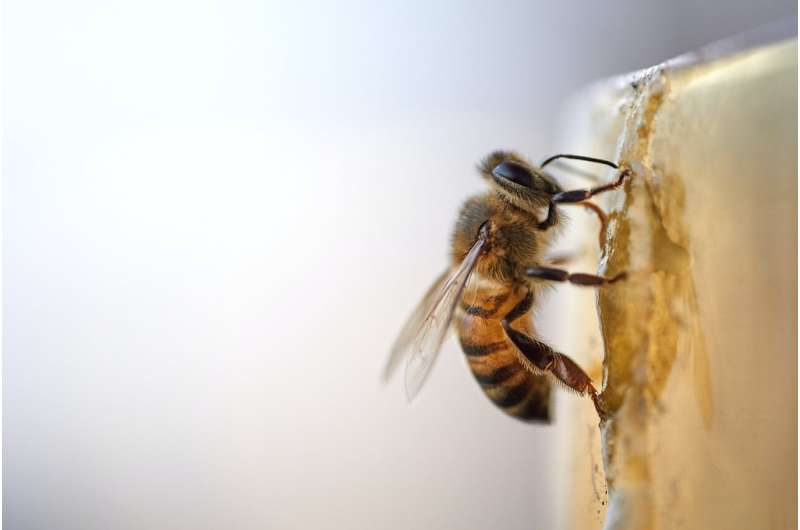This article has been reviewed according to Science X's editorial process and policies. Editors have highlighted the following attributes while ensuring the content's credibility:
fact-checked
peer-reviewed publication
trusted source
proofread
Bee disease offers rare insights into RNA virus origins

Two similar strains of a destructive honeybee disease have vastly different origin stories, revealing the ability of viruses to adapt rapidly and the risk this poses to global agriculture, according to new research involving Professor Sasha Mikheyev from The Australian National University (ANU).
Deformed wing virus (DWV) is a single-stranded ribonucleic acid (RNA) virus—in the same family as human pathogens such as polio or the common cold—that has devastated Western honeybee populations around the world.
According to this new research, the main strain of the virus—DFW A—found its way into Western honeybee populations after coming into contact with a closely related bee species in Asia in the middle of the 20th century. The study was published in Proceedings of the National Academy of Sciences (PNAS).
The other strain of the virus—DFW B—appeared later from an as-yet unknown source, though has spread rapidly and replaced the original strain in many regions.
"The study offers a rare insight in the origins of an RNA virus which, as we've seen through the COVID-19 pandemic, can be notoriously tricky to isolate," Professor Mikheyev said.
"The different origin stories of these DWV strains illustrate the dynamic nature of viral adaptation and competition, as well as the risks posed by globalization."
But how do viruses spread? In bees, as in other animals, they come from other hosts.
Unlike the common cold, which spreads from person-to-person, hosts are infected with DWV via a third party—varroa mites. These mites carry the virus and deliver it to their bee hosts, much as many human viruses are spread by mosquitoes.
Australia had been free of varroa mites until they were detected in New South Wales in 2022, posing a significant risk to Australian bee populations.
"We've long known that globalization is a major driver of novel disease," Professor Mikheyev said.
"In response, authorities around the world need better share data and monitor new diseases before they become a major issue.
"We need to get in early when it comes to dealing with new diseases, because once we hit crisis point, it's usually too late to prevent serious damage to the agriculture industry and people's livelihoods."
More information: Nonno Hasegawa et al, Evolutionarily diverse origins of deformed wing viruses in western honey bees, Proceedings of the National Academy of Sciences (2023). DOI: 10.1073/pnas.2301258120
Journal information: Proceedings of the National Academy of Sciences
Provided by The Australian National University


















